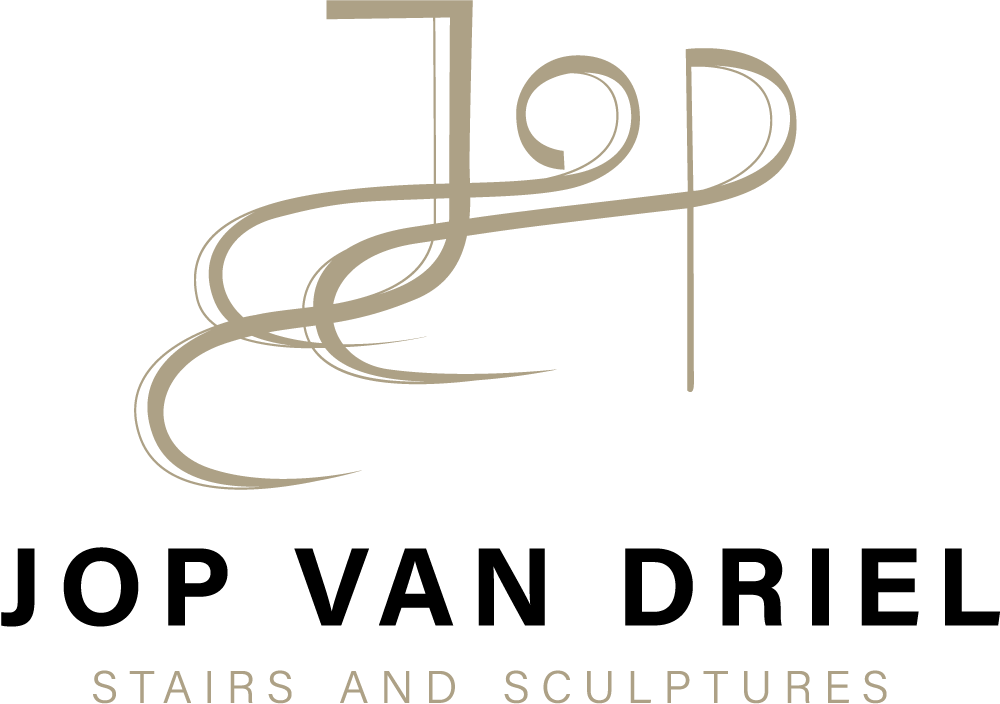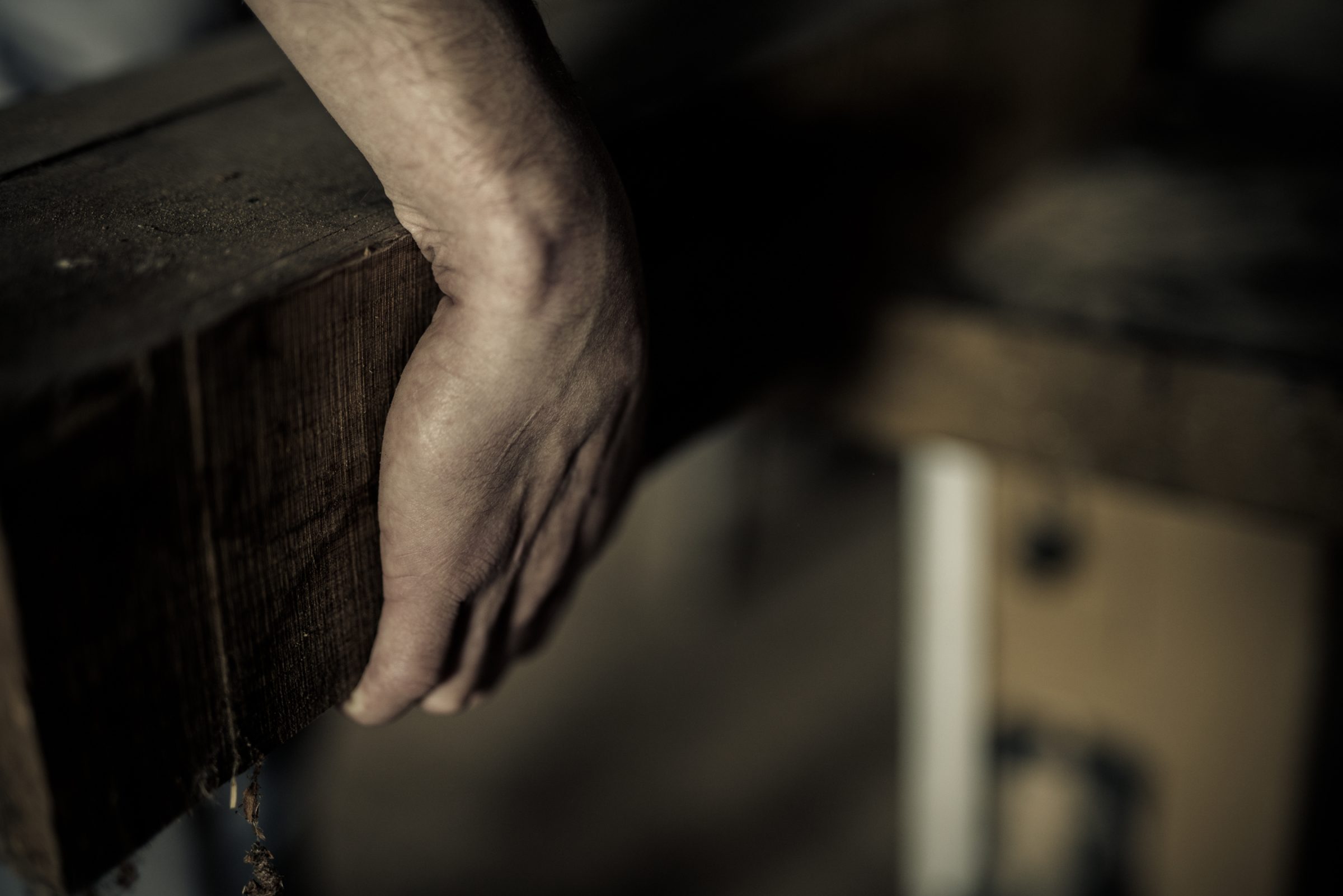Do you have a project that requires creativity and craftsmanship? Jop is ready to work with you. Contact him here.
EVERY STAIRCASE AND SCULPTURE REQUIRES ITS OWN WOOD OR WOOD COMBINATION. THIS IS DETERMINED BY THE TYPE OF STAIRCASE OR SCULPTURE, THE ENVIRONMENT IN WHICH THE STAIRCASE OR SCULPTURE IS PLACED AND THE DESIRE OF THE CLIENT. EACH TYPE OF WOOD HAS SPECIFIC PROPERTIES, SUCH AS HARDNESS, COLOUR AND PATTERN. AFTER CHOOSING THE TYPE OF WOOD COMES THE TRICKY PART: FINDING IT! SINCE I WANT MY STAIRCASES AND SCULPTURES TO FORM ONE COMPOSITION, I ALWAYS USE WOOD FROM THE SAME TREE TRUNK PER TYPE OF WOOD. THIS WAY I PREVENT A COLOUR DIFFERENCE AND DIFFERENCES IN THE PATTERN OF THE WOOD.
BEAUTIFUL COLOUR COMBINATION
I once designed a staircase for a luxurious villa at Lake Como (Villa Marco). The steps were made of oak and the handrail was of American walnut. This choice was the wish of the interior designer who was delighted about the colour combination. To find the right wood for this project I looked all over Europe. After extensive research, I found the wood for the Italian staircase at a very small sawmill in France.
LOOKING FOR PRECIOUS EBONY
In addition to France, I often go to Germany to look for special wood. The most difficult search was for a staircase that had an ebony handrail on it. Ebony is one of the most rare types of wood there is. It’s extremely expensive and therefor it’s difficult to find good quality for the right price. In Africa, ebony may be harvested every three years, with only a small number of trees being cut down. A sawmill in Northeast Germany had acquired the rights to import some trunks of ebony. So I started my search at this specific sawmill.
A KIND OF GAMBLING
You have to imagine: the tree trunks are lined up, but they are not cut yet. So you cannot judge the quality. That is only possible if you can see the inside. But you have to buy the trunk before it is cut. People from all over the world, especially from Russia and China, come to that sawmill to buy trunks of ebony. If they have selected one, they have to pay for it immediately. We are talking serious money here. The trunk is then cut to the desired thickness. If there appears to be white stripes in it, the entire trunk is worthless. It is a kind of gambling. I haven’t done that. I did not dare to take the risk with the budget of my client.
THE SEARCH CONTINUED
I started looking further and ended up at a small sawmill in southern Germany. They had a lot of Makassar wood. This is a type of wood from South-East Asia. It looks like ebony, but is dark brown instead of black and has flames in a slightly lighter shade of brown.
The young owner said they had no ebony. Since I needed to stay on schedule, I decided to go for a beautiful trunk of Makassar. I took a good look at a pile of wood that was in a dark corner of the mill and somewhere at the top I saw a number of pieces that looked black in colour. So I asked the man about it. He went into the office and it took quite some time before he came back. As it turned out: it was a very small batch of ebony that once was bought by his grandfather. In fact, everyone had forgotten that they had it. I was very pleased and bought the wood for a nice price. So in the end I was able to make the handrail with the right wood.
Do you have a certain type of wood in mind for your sculpture or staircase? Let me know, I can help you find it.

